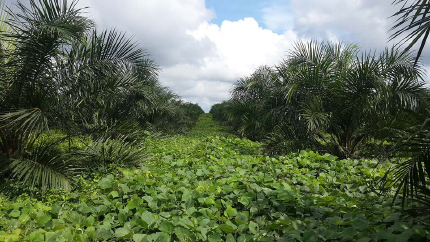
Palm oil, the most important source of vegetable oil in the world, is derived from the fruit of perennial palm trees, which are farmed year-round in mostly tropical areas. The palm fruit is harvested manually every 10 days to two weeks, then transported to a mill for processing, and ultimately exported and made into a dizzying array of products from food to toiletries to biodiesel.
Dozens of countries produce palm oil, but Indonesia produces approximately two-thirds of the world’s supply, and demand for the product is ever-growing.
This is a double-edged sword for Indonesia and other palm-oil producing countries. Palm oil is a major export and contributes to the economic stability of countries that are major producers, as well as to the individual farmers who produce it. But to keep up with demand, rainforests and peatlands — valuable ecosystems that contribute greatly to biodiversity — are often converted to palm production.
A research project led by DWFI Faculty Fellow Patricio Grassini and started with help from DWFI suggests that keeping up with demand may not necessarily mean converting more valuable, fragile ecosystems into agricultural land. The four-year project is now supported by a $4 million grant from the Norwegian Ministry of Foreign Affairs.
According to research published March 25 in Nature Sustainability, palm oil yields on existing farms and plantations could be greatly increased with improved management practices. In Indonesia, about 42% of land used for palm oil production is owned by smallholder farmers, with the rest managed by large plantations, said Juan Pablo Monzon, research assistant professor of agronomy and horticulture at Nebraska and first author of the published paper. “There is great potential to increase productivity of current plantations, especially in the case of smallholders’ farms, where current yield is only half of what is attainable.”
The research shows that palm farmers have significant opportunity to increase their production, said Grassini, one of the developers of the Global Yield Gap Atlas, a collaboration between the University of Nebraska–Lincoln and Wageningen University and funded in part by DWFI designed to estimate the difference between actual and potential yields for major food crops worldwide including palm oil.

